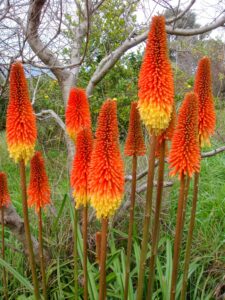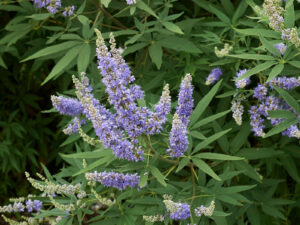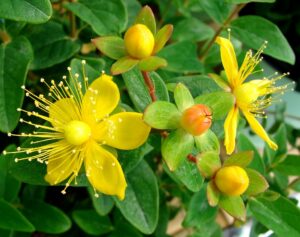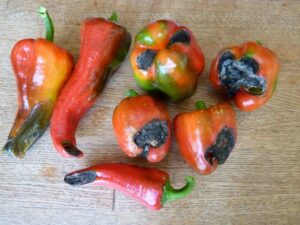July Garden Calendar
go.ncsu.edu/readext?869164
en Español / em Português
El inglés es el idioma de control de esta página. En la medida en que haya algún conflicto entre la traducción al inglés y la traducción, el inglés prevalece.
Al hacer clic en el enlace de traducción se activa un servicio de traducción gratuito para convertir la página al español. Al igual que con cualquier traducción por Internet, la conversión no es sensible al contexto y puede que no traduzca el texto en su significado original. NC State Extension no garantiza la exactitud del texto traducido. Por favor, tenga en cuenta que algunas aplicaciones y/o servicios pueden no funcionar como se espera cuando se traducen.
Português
Inglês é o idioma de controle desta página. Na medida que haja algum conflito entre o texto original em Inglês e a tradução, o Inglês prevalece.
Ao clicar no link de tradução, um serviço gratuito de tradução será ativado para converter a página para o Português. Como em qualquer tradução pela internet, a conversão não é sensivel ao contexto e pode não ocorrer a tradução para o significado orginal. O serviço de Extensão da Carolina do Norte (NC State Extension) não garante a exatidão do texto traduzido. Por favor, observe que algumas funções ou serviços podem não funcionar como esperado após a tradução.
English
English is the controlling language of this page. To the extent there is any conflict between the English text and the translation, English controls.
Clicking on the translation link activates a free translation service to convert the page to Spanish. As with any Internet translation, the conversion is not context-sensitive and may not translate the text to its original meaning. NC State Extension does not guarantee the accuracy of the translated text. Please note that some applications and/or services may not function as expected when translated.
Collapse ▲Plants in Flower
| Trumpet Creeper | Butterfly Weed | Daylily | Phlox |
| Red Hot Poker | Rose-of-Sharon | Sourwood | Crapemyrtle |
| St. John’s Wort | Abelia | Big Leaf & Oakleaf Hydrangea | Chaste-Tree |
| Canna | Dahlia | Penstemon | Salvia |
| Agastache sp. | Coreopsis sp. | Shasta Daisy | Summer annuals |
Fertilizing
- We recommend giving landscape plants a second (last) feeding of fertilizer.
Planting
- Begin your fall vegetable garden this month, planting beans, carrots, Brussel sprouts, collards and tomatoes
- Start broccoli, cabbage and cauliflower plants in peat pots to transplant into the vegetable garden in mid-August
- Re-pot overgrown houseplants
- Take semi-hardwood cuttings of azaleas, holly, rhododendron, etc.
- Divide and transplant your iris and daylilies (late this month through September)
Pruning
- Deadhead perennial flowers (sends extra plant energy to promote healthy roots for next year or for more blooms later in the summer)
- Prune suckers from flowering trees and shrubs like crape myrtles, crabapples, apples & pears (improves appearance and reduces chance of diseases that are attracted to the young, succulent growth)
- Trim up hedges as needed
- Pinch chrysanthemums to encourage branching (1st week only!)
- Prune Oakleaf, Bigleaf, Mountain, and Climbing hydrangeas right after flowering (Panicle and Smooth hydrangeas should be pruned in late winter before buds break)
Spraying
- Certain pesticides have a waiting period of several days between the time of the last spray and harvest called “Harvest Interval Date.” Read and follow directions on all labels before applying to your vegetable crops. Wash all produce thoroughly before use
- Spray foliage for Japanese beetles as needed (don’t spray flower blooms because the chemicals are toxic to beneficial pollinators)
- Spray the following vegetables if insects are observed: cucumber (cucumber beetle), squash (aphids), tomato and eggplant (flea beetle)
- Spray woody weeds like poison ivy, honeysuckle and kudzu with a recommended herbicide
Lawn Care
- Mow fescue turf at 3-4 inches for best quality & to avoid scalping/scorching
- Take soil samples for testing and to prepare for fertilizer applications in the fall. Soil boxes are available at the N.C. Cooperative Extension, Alexander County Center (Free until December 1!)
- Remember to change direction when moving your lawn. Travel north to south on one mowing and east to west on the next cutting
Chores
- Harvest garden crops daily/regularly (early picking is best) to help increase production
- With herbs, harvest before they flower for peak flavor or aroma. Pick herbs in the morning when the dew has dried off, when the aroma will be the most intense
Summer Garden Problems
- Blossom-end rot (too little water or too little lime /calcium the soil)
- On hot days, water important plants (veggies, landscape plants, spring-planted landscape trees, pots, & hanging baskets) in the morning. Slow watering (approx. 1” of water) will penetrate the root zone better
- Reduce the mosquito population by emptying standing water (larvae only need a small amount of water to grow)
- Downy mildew, powdery mildew, and anthracnose – causes rapid wilt & leaf and stem dieback. Treat with chlorothalonil, mancozeb, fixed copper, or other recommended sprays Always read the labels!
- Early and Late Tomato Blights – causes dark spots occur first on leaves, then stems (if not treated, causes plant to look scalded). Treat with chlorothalonil, mancozeb, fixed copper, or other recommended sprays
- Mexican bean beetle – larvae are yellow and covered with little spines and adults are copper colored (resemble large ladybugs). Feed on undersides of bean and pea leaves leaving behind a lace-like appearance Reduces plant productivity. Treat with Sevin, Bifenthrin, Spinosad, and other recommended sprays
- Squash bug – an oval elongated dark brown bug with light gray on its back Lay eggs on top of leaves of gourds, squashes, and melons. Feed in colonies by piercing vines and injecting toxins, causing vines to blacken and dry out. Treat with Bifenthrin
- Corn earworm – 2in brown to green worm with stripes on their backs (adult stage) food of choice is sweet corn but may also feed on tomatoes, beans, or cabbage. Treat with Sevin, Bifenthrin, or other recommended spray

















